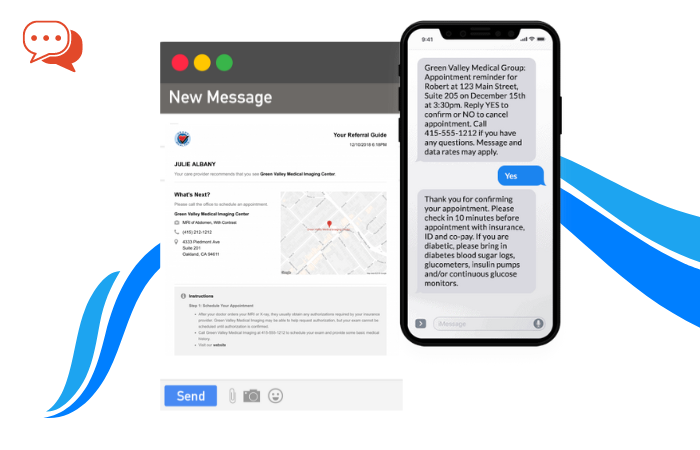Doctors learn early in residency that there are some elements of the practice of medicine that they simply cannot control. There is that inevitable moment where every doctor wonders why some patients inexplicably fail to thrive while others experiencing the same treatment modalities return to health.
We know that individual genetics, environmental factors, and lifestyle choices affect the healing process. However, we don’t know exactly how these factors come together to help our patients heal. Because of this, predicting the future of an individual patient’s health has simply been outside the scope of the definition of a physician.
This may be about to change.
New inroads in the field of data science may finally provide us with the crystal ball we’ve been missing in patient care settings. Predictive analytics in healthcare may allow us the insight to personalize patient care in a way that takes into account past behaviors, genetic markers, and environmental factors to help clinicians suggest a course of care with the best possible outcomes.

What are Predictive Analytics in Healthcare?
Healthcare providers have a long track record of leveraging evidence-based care. Predictive analytics uses the power of modern computing models and the patient data we’ve captured to predict potential future events, trends, and behavior patterns. Predictive models can analyze both current and historical data to understand customers, purchasing patterns, and procedural problems to help predict potential dangers and opportunities for an organization.
In the healthcare field, scientists and clinicians can use these computer model predictions to help inform their decision-making around patient care. Big data and predictive analytics uncover unknown correlations, insights, and hidden patterns through examining large datasets and forming predictions based on them.
Predictive analytics can improve operational costs and increase workflow efficiency on a hospital floor. They can be used in population health models. These are just a few examples; the field continues to evolve as the algorithms behind artificial intelligence software improve.
It should be noted that predictive analytics is different from descriptive analytics, which was the first iteration of this science. As the name implies, descriptive analytics shares information about qualitative data. Predictive analytics takes that data and uses it to recommend or even predict future outcomes.
Today, there are two types of predictive analytics: Supervised and unsupervised.
- In supervised predictive analytics computer-assisted models begin with human logic that fits a scientific or clinical hypothesis. Algorithms are created, using rules and formulas written in machine learning language. The data is run through these algorithms to gain a result.
- In unstructured predictive analytics, the data lacks the human construct but is overlayed with an algorithm that seeks meaning from the patterns the computers discern. The machine doesn’t know what it’s looking for, but as the data runs through the computer program, it begins to identify patterns in the raw information.
Analytics as a field of business intelligence has been around since the 1940s, although today’s data analytics platforms of course are nothing like these early models. Now we have computer-assisted analytics in every field. Healthcare, which has a wealth of patient data within their EMRs, is the perfect case study for the use of predictive analytics.

How Can Healthcare Providers Use Predictive Analytics?
Healthcare providers can use predictive analytics to improve patient wellness outcomes on the front end of care. Behind the scenes, these same tools can improve operational processes and cut costs.
Predictive analytics is making its mark in every field, from criminal justice to finance, marketing to hospitality. The complexities of healthcare along with the massive amount of patient data we capture offer the perfect storm for the application of predictive analytics.
For example, predictive analytics can help healthcare providers determine:
- The types of diseases patients are more likely to develop
- How different types of treatments may affect specific patient populations
- Is the patient more likely to be a no-show at their next appointment?
- Which patients will be less likely to pay their bills?
Proactive predictive modeling can lower healthcare costs by identifying the patients at-risk for chronic illness and then counseling them with personalized prevention strategies. Once patients develop a chronic illness, predictive modeling can be used after a hospitalization to point out which patients are more likely to experience a readmission in the next 30-days. Given the high instance of hospital readmission penalties, this could be a significant way to cut health system costs.
In a hospital setting, studies show that predictive analytics can be effective in predicting complications in an inpatient setting, such as sepsis or acute kidney injury. This type of software can detect very early stage breast cancer cells and can even predict relapse rates for leukemia with 90% accuracy.
However, predictive analytics can do more than affect patient healthcare outcomes or help hospitals prepare for a patient surge. These tools can also impact the patient experience at the ground level, providing the insight necessary to deliver a much more personalized customer care experience.

What are the Benefits of Using Predictive Analytics in Healthcare?
There are several benefits of using predictive analysis in healthcare:
- Better patient outcomes
- Improve healthcare operations
- Identify risk
- Increase patient-centered care
Better Patient Outcomes
Predictive analytics serve to support decision-making among clinical and administrative teams. It is also increasingly being used to advise on the risks of deaths in surgery based on the patient’s current condition, previous medical history, and drug prescription.”
As an example, researchers at the University of Michigan Rogel Cancer Center developed a new blood test that uses predictive analytics to determine if a particular type of treatment for HPV-positive threat cancer is working well before standard tests show its effectiveness. This allows doctors to switch treatment plans months earlier if they aren’t seeing the positive results they hoped for, which will help these patients avoid some of the toxic side effects of a cancer treatment that isn’t working.
Improve Healthcare Operations
Another benefit of predictive analytics is that these tools can identify operational improvement efficiencies in care delivery. These tools can help analyze staff performance as well as system inefficiencies that affect the bottom line, such as patient/staff ratios or seasonal sickness patterns.
For example, there is a new predictive analytics algorithm that shows future models of COVID pandemic surges so that healthcare providers can have some advance warning to prepare and more efficiently deploy resources.
Identify Risk
Two examples of risk mitigation when using predictive analytics include:
- Healthcare providers use prescriptive analytics to cut the risk of patient readmissions; one health system reduced this problem by 40% within 18 months of using these tools.
- Healthcare providers and insurance payers leverage predictive analytics to calculate risk scores for online transactions to improve cybersecurity and reduce insurance fraud.
Increase Patient-Centered Care
Personalization lies at the heart of patient-centered care, both in our ability to tailor treatment modalities to individuals but also in our efforts to proactively counsel patients to improve their health. Healthcare providers can target those patients who are more receptive to making lifestyle changes and then target them with nutrition, exercise, or other types of customized educational messages.
However, like all new technologies, these important benefits are balanced with risks associated with the rapid rise of these tools. What cautionary tale should healthcare providers take away from the growth of predictive analytics tools?

Are There Risks Associated with Predictive Analytics in Healthcare?
The old ways of doing things are changing at a much more rapid pace now. This in itself is a red flag for healthcare where the scientific method enforces a certain element of careful rigor before deployment of a new clinical technique or treatment modality.
Technology in and of itself is a disruptive force pushing change and innovation at a much faster pace than normally witnessed in the stoic hospital field. Hospital administrators and doctors feel pressure to combine the human aspects of patient care with technology tools they may feel less-than willing to embrace. Finding a balance between data analytics tools and the trusted doctor/patient relationship was a struggle when healthcare providers were compelled to leverage EHRs. Will doctors drag their feet when asked to adopt predictive analytics tools that border on artificial intelligence?
Another risk beyond the stakeholder buy-in necessary to use these new software tools is the risk to patient data. We’re not just talking about cybersecurity, but the potential for misuse of patient data in ways that create a moral conundrum. Consent and privacy issues are regulated by the government, but computer science is evolving so rapidly, there will likely be gray areas in the future that could be of concern.
The field of predictive analytics in healthcare is evolving so quickly that we should expect the unexpected when incorporating these tools into a patient care setting.
What’s Next for Healthcare Predictive Analytics?
Today, at least 60% of healthcare executives say they actively use predictive analytics in their practice. That number will most certainly increase; the global predictive analytics healthcare marketplace will increase to $7.8 billion by 2025. U.S. healthcare organizations have begun cautiously using these tools to benefit patients, their staff, and the bottom line.
As the technology evolves and disrupts the industry in new ways, healthcare organizations must move to reap the benefits of these tools while mitigating any risks. However, the advantages associated with well designed and skillfully implemented predictive analytics in healthcare far outweigh potential issues.










